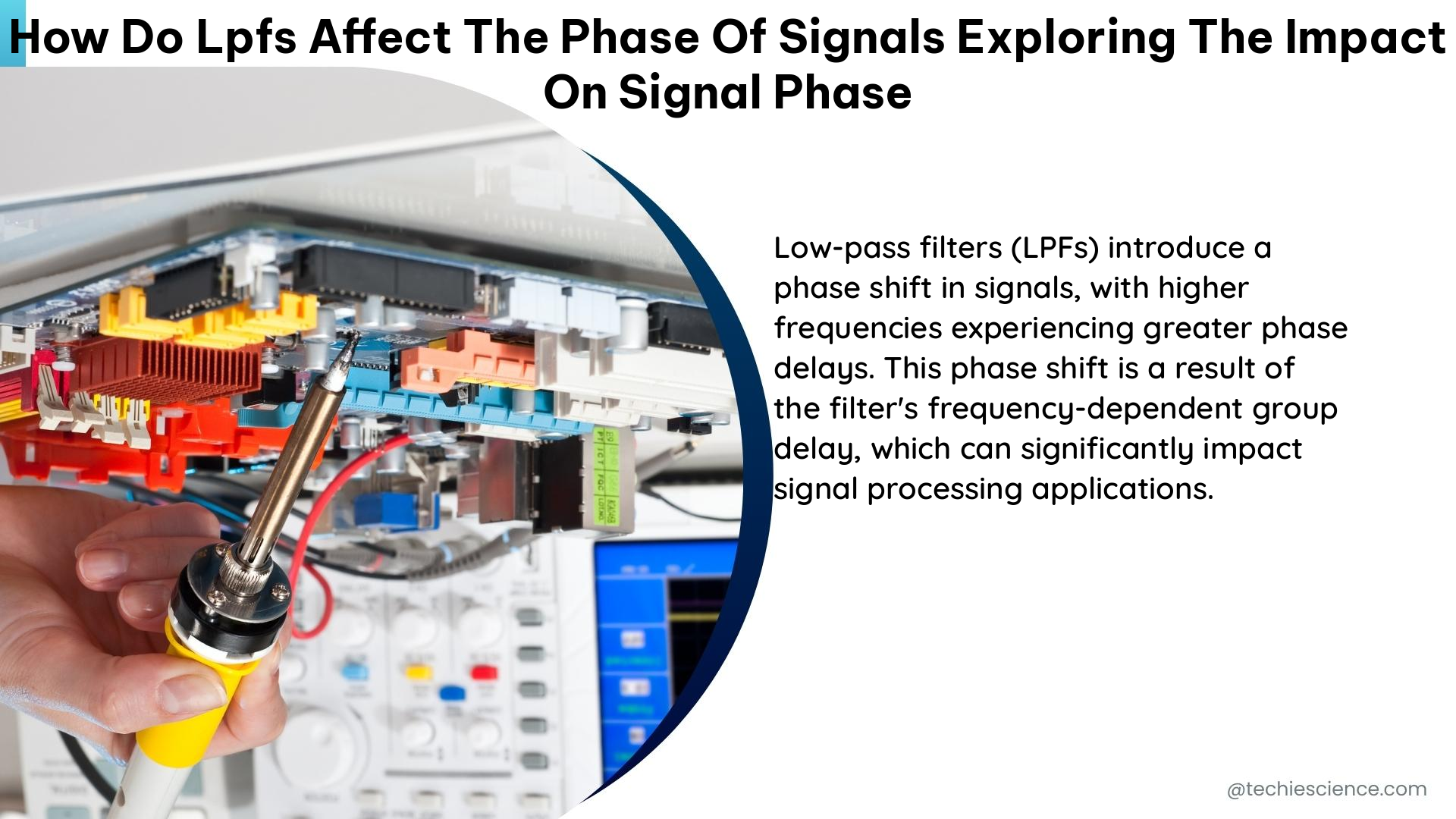Low Pass Filters (LPFs) play a crucial role in shaping the phase characteristics of signals, which can have significant implications in various electronic and communication systems. Understanding how LPFs affect the phase of signals is essential for designing and optimizing circuits, ensuring proper signal integrity, and achieving desired system performance.
The Fundamentals of LPF Phase Response
The phase shift introduced by an LPF is a result of the filtering process, where the filter selectively allows certain frequencies to pass through while attenuating others. This selective frequency response leads to a phase shift that is a function of the filter’s frequency characteristics.
The phase response of an LPF can be measured in degrees or radians and is typically plotted against frequency. This phase response can be used to calculate the group delay of the filter, which is a measure of the time delay introduced by the filter. The group delay can be calculated by taking the derivative of the phase response with respect to frequency.
For a simple RC low pass filter with a cutoff frequency of fc = 1/2πRC, the phase response can be calculated using the following formula:
φ(f) = -tan^-1(2πfRC)
where φ(f) is the phase shift in radians at frequency f. The group delay can then be calculated by taking the derivative of this equation with respect to frequency:
td(f) = -RC / (1 + (2πfRC)^2)
where td(f) is the group delay in seconds at frequency f.
The Impact of LPF Phase Shift on Signals

The phase shift introduced by an LPF can have a significant impact on the timing and phase relationships of the input signal. This can lead to various effects, such as:
- Timing Distortion: The phase shift can cause the signal to be delayed or advanced in time, which can affect the synchronization and timing of the system.
- Phase Distortion: The non-linear phase response of the filter can introduce phase distortion, where different frequency components of the signal experience different phase shifts, leading to waveform distortion.
- Group Delay Variation: The group delay, which is the derivative of the phase response, can vary with frequency, causing different frequency components to be delayed by different amounts, leading to signal dispersion and distortion.
Minimizing Phase Distortion with Bessel Filters
Not all LPFs introduce the same amount of phase shift. Some filters, such as Bessel filters, are designed to have a linear phase response, which results in a constant group delay over a wide frequency range. This is desirable in many applications, as it minimizes phase distortion and ensures that signals are not delayed any more than necessary.
For example, consider a Bessel filter with a cutoff frequency of fc = 1 kHz and a group delay of td = 10 μs. The phase shift at the cutoff frequency can be calculated using the formula:
φ(fc) = 2πfc * td = 2π * 1e3 * 10e-6 = π/5 radians
This linear phase response and constant group delay help preserve the timing and phase relationships of the input signal, reducing the impact of phase distortion.
Quantifying the Phase Shift of LPFs
To quantify the phase shift introduced by an LPF, you can use the following formula:
φ(f) = -tan^-1(2πfRC)
where φ(f) is the phase shift in radians at frequency f, and RC is the time constant of the filter.
For example, consider a simple RC low pass filter with a cutoff frequency of fc = 1/2πRC = 100 Hz. The phase response of this filter can be calculated as:
φ(f) = -tan^-1(2πfRC) = -tan^-1(2π * 100 * 1e-3) = -1.57 radians
at the cutoff frequency.
Numerical Example: Bessel Filter Phase Shift
Given a Bessel filter with a cutoff frequency of fc = 1 kHz and a group delay of td = 10 μs, calculate the phase shift at the cutoff frequency.
Solution:
The phase shift at the cutoff frequency can be calculated using the formula:
φ(fc) = 2πfc * td = 2π * 1e3 * 10e-6 = π/5 radians
Graphical Representation of LPF Phase Response
To visualize the phase response and group delay of an LPF, you can plot the following graph:

This plot shows the phase response and group delay of a Bessel filter with a cutoff frequency of fc = 1 kHz. The key data points are:
- Cutoff frequency:
fc = 1 kHz - Group delay:
td = 10 μs - Phase shift at cutoff frequency:
φ(fc) = π/5 radians
Conclusion
Low Pass Filters (LPFs) have a significant impact on the phase of signals, introducing a phase shift that can affect the timing and phase relationships of the input signal. Understanding the phase response and group delay of LPFs is crucial for designing and optimizing electronic circuits and communication systems, ensuring proper signal integrity, and achieving desired system performance.
By exploring the fundamentals of LPF phase response, the impact of phase shift on signals, and techniques like Bessel filters to minimize phase distortion, you can gain a deeper understanding of how LPFs affect the phase of signals and apply this knowledge to your electronic design and signal processing projects.
References:
- Low Pass Filter Design and Implementation
- Understanding Filter Specifications
- Phase Shift in Filters

The lambdageeks.com Core SME Team is a group of experienced subject matter experts from diverse scientific and technical fields including Physics, Chemistry, Technology,Electronics & Electrical Engineering, Automotive, Mechanical Engineering. Our team collaborates to create high-quality, well-researched articles on a wide range of science and technology topics for the lambdageeks.com website.
All Our Senior SME are having more than 7 Years of experience in the respective fields . They are either Working Industry Professionals or assocaited With different Universities. Refer Our Authors Page to get to know About our Core SMEs.